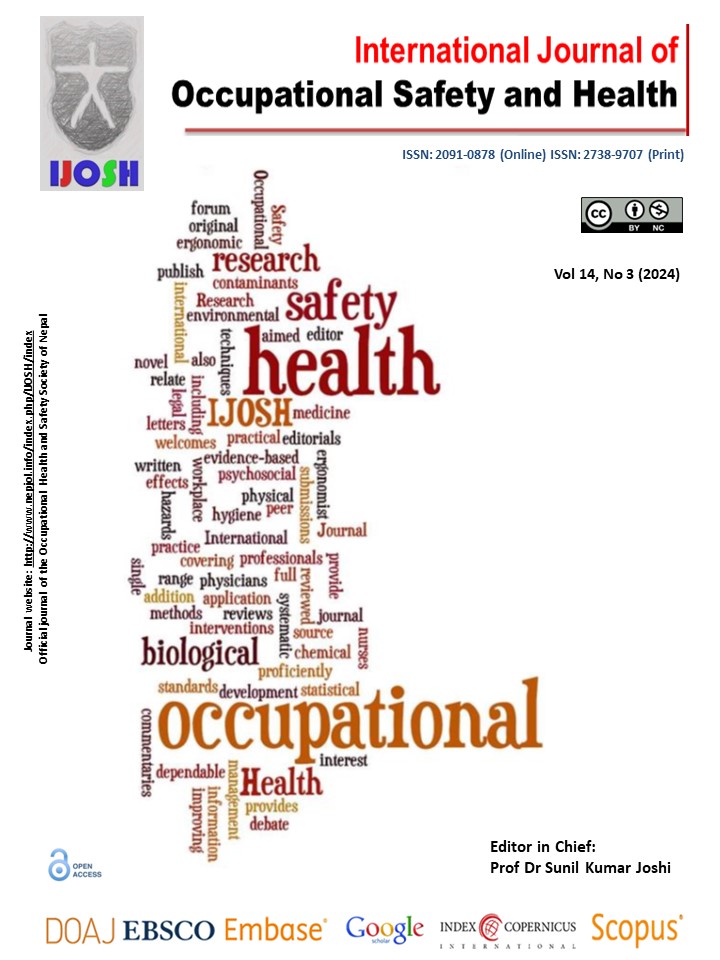Aviation Podiatry - What place does podiatry have in aerospace medicine?
DOI:
https://doi.org/10.3126/ijosh.v14i3.58373Keywords:
Podiatry, Occupational Injury, Aviation Medicine, Aerospace Medicine, Industrial InjuryAbstract
Introduction: With there being 12 commercial airlines within the U.K and over 4 billion passengers travelling by aircraft every year, it is of no surprise that thousands of men and women are employed as cabin crew. Physical demands imposed upon cabin crew have long been recognized and known to place this particular population at an increased risk of experiencing a work-related injury. Whilst previous research would also suggest that there is a relationship between footwear and the occurrence of musculoskeletal (MSK) lower limb symptoms, there is a need to consider such a relationship specifically among an aviation cabin crew population.
Methods: Quantitative data was obtained from a sample of 250 junior crew at a leading airline in the Middle East over 12 months. The sample involved both female and male crew of a healthy BMI who were aged between 22-30 years. All participants were asked closed questions with regard to their lower limb health and footwear. Dynamic gait scans utilizing a Podotech scanner were also used to assess the participant's gait and validate other data.
Results: The screening found that 34% of the crew were found to have an MSK podiatric issue with 30% requiring orthoses. Of the 34%, 30% of this group had footwear issues. Common biomechanical issues were identified in the sample group. A holistic approach to care that included the provision of aviation podiatry allowed longer-term treatment outcomes to be achieved. The use of orthotics that were made from EVA and in accordance with recent podiatric research proved beneficial in helping to address underlying biomechanical issues.
Conclusion: The findings presented a more detailed analysis of lower limb biomechanical issues among cabin crew and how such issues could have wider implications for the occupational role of the sample group. Consideration to podiatric issues among aviation staff, as a whole, should not be overlooked. Given the incidence of lower limb issues among the sample group, future rehabilitation and prevention strategies would clearly benefit from the specialist insights of an aviation podiatrist contributing as part of a multi-disciplinary aeromedical team.
Downloads
Downloads
Published
How to Cite
Issue
Section
License
Copyright (c) 2024 The Author(s)

This work is licensed under a Creative Commons Attribution-NonCommercial 4.0 International License.
This license enables reusers to distribute, remix, adapt, and build upon the material in any medium or format for noncommercial purposes only, and only so long as attribution is given to the creator.





